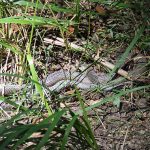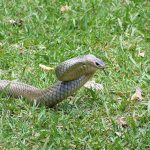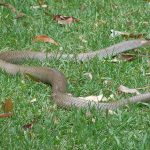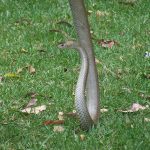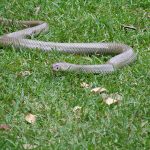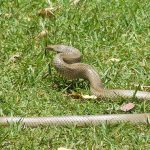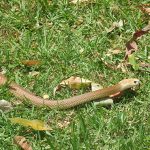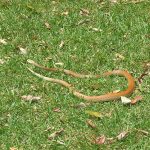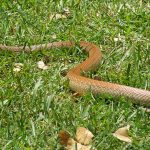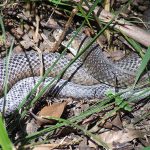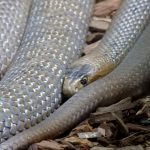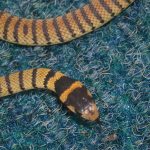EASTERN BROWN SNAKE
Eastern Brown Snake
The Eastern Brown Snake is one of Australia’s most remarkable and misunderstood reptiles. Its presence across much of eastern Australia makes it a familiar name, but its biology and role within the ecosystem reveal a far more complex story.
Appearance and Identification
The Eastern Brown Snake isn’t always simply “brown.” Instead, its appearance can range dramatically:
- Colours: Individuals may be cream, yellow, rich red-brown, or nearly black. Many display bands, speckles, or spots across their bodies.
- Juveniles: Young snakes often look quite different from adults, typically with a distinctive black marking behind the head.
- Size: Most adults are about 1.5 metres long, but some can exceed 2 metres.
- Body: They have a slender, agile build, ideal for rapid movement.
Imagine the snake moving quietly across dry leaves—the smooth scales glinting in dappled sunlight, its tongue flicking out to taste the air, always alert to its surroundings.
Behaviour and Temperament
The Eastern Brown Snake is diurnal—active during the day—and is known for its incredible speed and keen senses. When threatened, it famously adopts an upright posture, forming an “S” shape with its neck before striking with astonishing speed. Despite their reputation, these snakes prefer to avoid humans, using their venom defensively only when they cannot escape.
Venom and Danger
This species is considered highly venomous—its venom ranks among the deadliest for land snakes anywhere in the world. The venom quickly affects the nervous and circulatory systems, making it dangerous for small animals and humans alike. While it has historically been responsible for the most snakebite-related deaths in Australia, fatalities have become rare, largely thanks to effective antivenom and improved first aid awareness. Most people bitten were inadvertently disturbing the animal or attempting to handle it.
Diet and Hunting
The Eastern Brown Snake primarily targets:
- Small mammals, such as native rodents and mice (making them valuable pest controllers)
- Birds
- Frogs
- Other reptiles
Their approach is swift and precise: the snake scents its prey, moves silently, then strikes and waits for the venom to take effect. They are even known to explore hunting grounds in and around suburban areas, highlighting their adaptability.
Habitat and Distribution
You’ll find Eastern Brown Snakes throughout:
- The entire eastern seaboard of Australia, from Queensland to Victoria and into South Australia
- Open grasslands, woodlands, farmlands, and even gardens and city fringes
They tend to avoid dense rainforests but thrive in environments where small mammals are common.
Life Cycle
Reproduction is a dramatic time for these snakes:
- In early spring, males engage in wrestling matches to compete for females
- Females lay clutches of 10–35 eggs in late spring or early summer
- Hatchlings, about 20 centimetres long, are independent and venomous from birth
Conservation and Coexistence
The Eastern Brown Snake plays an important ecological role, controlling populations of rodents and helping maintain balance in their habitats. Though common, they face threats from habitat loss and road fatalities.
Conservation Message:
While their reputation inspires caution, these snakes rarely seek conflict with humans. By learning about their habits, understanding how to avoid them, and appreciating their place in the environment, we can coexist safely—ensuring a future for both people and these remarkable reptiles.
The Eastern Brown Snake is not only a symbol of Australia’s wild heart but also a testament to the intricate connections within our natural world. With respect and awareness, we can admire its beauty and significance from a safe distance, cherishing the role it plays in the landscapes we share.
Snake bite emergency information

